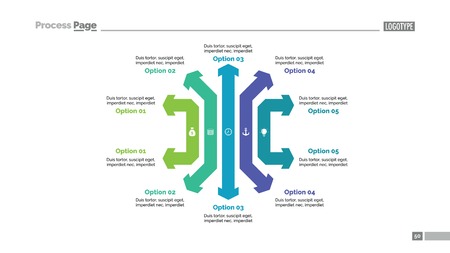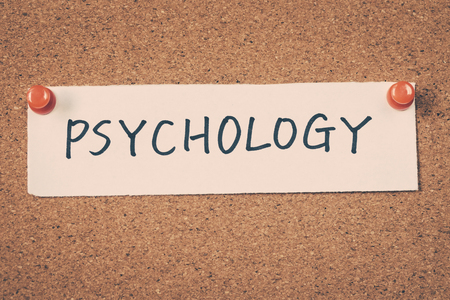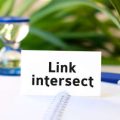Understanding Visual Psychology in Digital Contexts
When it comes to SEO, visuals are far more than just decorative elements—they are powerful tools that can make or break user engagement on search engine results pages (SERPs). To understand why images have such an impact, we first need to look at how the human brain processes visual information online. Studies show that our brains process images up to 60,000 times faster than text. This rapid processing allows users to instantly form impressions and make decisions about what content is worth their attention. In the fast-paced digital world, users often scan SERPs in seconds, relying heavily on visual cues to guide their clicks. Images stand out amidst blocks of text and act as attention magnets. The psychology behind this lies in our evolutionary wiring—humans are naturally drawn to visuals because they help us quickly assess relevance and potential value. On platforms like Google, where featured images, thumbnails, and rich snippets appear alongside blue links, the right image can trigger curiosity, trust, and emotional connection in a split second. American users especially expect visually appealing, contextually relevant graphics that align with cultural preferences, such as clarity, authenticity, and relatability. By understanding these psychological triggers, marketers and website owners can strategically select images that not only draw eyes but also influence click behavior in meaningful ways.
2. The Impact of Image Selection on Click-Through Rates
When it comes to SEO, visuals aren’t just about making your content attractive—they play a strategic role in influencing whether users actually click on your page. Research consistently shows that the type of image you choose, its relevance to the content, and the emotional response it triggers can dramatically affect click-through rates (CTR). Let’s break down how these three factors interact and why they matter for search performance.
Image Types: Stock Photos vs. Custom Graphics
The kind of image you use sends an immediate signal to users about the quality and authenticity of your content. Stock photos are easy to source but may appear generic or overused, while custom graphics or original photographs tend to foster trust and engagement. Consider the following:
| Image Type | User Perception | Typical CTR Impact |
|---|---|---|
| Stock Photo | Generic, less trustworthy | Lower |
| Custom Graphic/Photo | Unique, credible, engaging | Higher |
Relevance: Matching Visuals to Search Intent
Images must align with both the topic and the user’s search intent. An image that visually summarizes your content or clearly relates to the searched keyword improves clarity and sets accurate expectations—this increases the likelihood of a click. For example, if someone searches “healthy breakfast ideas,” showing vibrant, appetizing breakfast foods works much better than a generic kitchen scene.
Checklist for Image Relevance:
- Directly illustrates the main concept or product
- Includes visual cues related to keywords or user intent
- Avoids misleading or unrelated imagery
Emotional Triggers: The Psychology Behind User Action
Humans are hardwired to respond emotionally to visuals before processing text. The right image can spark curiosity, trust, excitement, or even urgency—emotions that drive users to take action. For instance, smiling faces tend to generate positive feelings and encourage clicks, while dramatic contrasts or bold colors catch attention quickly.
| Emotion Triggered by Image | Example Visual Element | POTENTIAL CTR EFFECT |
|---|---|---|
| Curiosity | Mystery objects, partial reveals | Moderate-High Increase |
| Trust & Relatability | Diverse real people, authentic settings | High Increase |
| Excitement/Urgency | Bright colors, dynamic movement cues | Varies; context-dependent |
| Boredom/Irrelevance | Bland backgrounds, repetitive stock images | No Change or Decrease |
The Bottom Line for SEO Success:
Your choice of visuals is far from cosmetic—it is deeply psychological. By selecting images that are relevant, authentic, and emotionally resonant with your audience, you can meaningfully boost your click-through rates and gain a competitive edge in SERPs.

3. Cultural Nuances: What Appeals to American Audiences
Understanding the psychology of visuals in SEO goes beyond choosing high-quality images—it’s about tapping into cultural cues that resonate with your target audience. In the United States, visual preferences are shaped by a blend of historical influences, social trends, and media consumption habits. Let’s break down what makes certain images more effective for American viewers and how this impacts click behavior.
Visual Trends That Drive Engagement
Americans tend to gravitate towards visuals that feel authentic, relatable, and current. Images featuring real people in everyday scenarios often outperform generic stock photos. Diversity is also crucial; Americans respond positively to inclusive visuals that reflect the nation’s multicultural makeup. Bright colors, clean compositions, and dynamic action shots align with American sensibilities, making content feel fresh and inviting.
Cultural Symbols and Their Impact
Symbols carry significant weight in American visual culture. For example, imagery incorporating elements like the American flag, sports themes (especially football and baseball), or iconic landmarks (such as the Statue of Liberty) can instantly evoke familiarity and trust. However, it’s important to use these symbols thoughtfully—overuse or misapplication may come across as insincere or clichéd.
The Power of Storytelling Imagery
American audiences appreciate visuals that tell a story or suggest a narrative. Photos that capture moments of action, emotion, or personal achievement connect on a deeper level and encourage users to click for more context. This storytelling approach aligns with broader trends in U.S. advertising and media, where emotional resonance drives consumer engagement.
Staying Current with Pop Culture
Leveraging pop culture references can give your SEO visuals an edge. Whether it’s nods to trending TV shows, viral memes, or seasonal events like the Super Bowl or Fourth of July, timely references make your content feel relevant and shareable. Just be sure your imagery remains appropriate and aligned with your brand identity.
Key Takeaway
Choosing visuals that reflect American cultural nuances isn’t just about aesthetics—it’s a strategic move to boost user engagement and influence click behavior. By understanding what resonates locally, you can tailor your image strategy for stronger SEO results.
4. Best Practices for Image Optimization in SEO
When it comes to leveraging the psychology of visuals in SEO, optimizing your images is more than just compressing files and adding alt text. To truly influence user click behavior and maximize organic reach, you need a strategic approach to image selection, formatting, and tagging. Here’s a systematic breakdown of actionable strategies that align with American digital culture and search engine expectations.
Choose Images That Resonate With Your Audience
Americans are drawn to authenticity, diversity, and relevance in visuals. Select images that reflect real-life scenarios, relatable emotions, and inclusive representation. Avoid generic stock photos—users are more likely to engage with original or contextually relevant imagery that matches their search intent.
Checklist: Selecting Effective Images
| Criteria | Best Practice |
|---|---|
| Relevance | Directly relates to page content & keyword intent |
| Diversity | Represents varied demographics & real situations |
| Emotion | Conveys emotion that aligns with message & brand voice |
| Originality | Avoids overused stock; custom or unique whenever possible |
| Quality | Crisp resolution; visually appealing at all screen sizes |
Format Images for Web Performance and Compatibility
Your image format impacts both page load speed and visual quality—two factors closely tied to user experience and SEO rankings. Use modern file types like WebP for faster loading without sacrificing clarity. For WordPress users, ensure responsive sizing by utilizing the srcset attribute so images display optimally on every device.
Recommended Image Formats By Use Case
| Image Type | Best Format(s) | Why? |
|---|---|---|
| Photographs/Complex Graphics | WebP, JPEG | Balance of quality and compression; WebP offers superior optimization for Chrome/Edge users. |
| Screenshots/Icons/Logos | PNG, SVG (for vector) | Keeps sharp edges; SVG is scalable for icons/logos. |
| Animated Images | GIF, WebP (animated) | Smooth animation with smaller file size in WebP format. |
Tag Images for Maximum Search Visibility (and Accessibility)
The way you tag images directly impacts how they appear in Google Image Search—and whether people click through to your site. Proper tagging also improves accessibility, which is important for compliance with American standards such as ADA.
Image Tagging Essentials: Alt Text, Title, and Structured Data
| Element | Description & Best Practice |
|---|---|
Alt Text (alt="") |
Describe the image concisely using primary keywords only if relevant; make it helpful for screen readers (e.g., “Smiling woman holding reusable coffee cup”) |
Title Attribute (title="") |
Add context or a call-to-action if beneficial; not always required but can enhance UX (e.g., “Learn how reusable cups help the environment”) |
Structured Data (<schema.org/ImageObject>) |
If applicable, use schema markup to help Google understand your image content and increase eligibility for rich results. |
Pro Tip:
If you’re targeting American audiences, include cultural cues or landmarks in your alt text when contextually appropriate (e.g., “New York skyline at sunset”). This can increase local relevance and improve CTR from US-based searches.
Create Click-Worthy Image File Names and URLs
Your image file names should be descriptive but succinct. Use hyphens instead of underscores (e.g., woman-drinking-coffee.jpg). Keep URLs clean and keyword-focused—this not only helps with SEO but also builds trust among American users who often hover over links before clicking.
The Takeaway: Systematize Your Image SEO Process
The most successful websites treat image optimization as an ongoing system rather than a one-time task. Build an internal checklist based on the above best practices and integrate it into your content workflow. By doing so, you’ll boost your visibility in search results, attract more organic clicks, and create a more engaging experience tailored to American web users’ preferences—all while staying ahead of evolving SEO trends driven by visual psychology.
5. Measuring the Effectiveness of Visuals in SEO
Why Tracking Visual Performance Matters
When it comes to optimizing your site for search engines, the images you choose aren’t just decorations—they can directly impact how users interact with your content. Understanding which visuals drive more clicks and engagement is crucial for refining your SEO strategy. By systematically tracking and interpreting key metrics, you can uncover which image choices truly resonate with your audience and move the needle on site performance.
Key Metrics to Monitor
1. Click-Through Rate (CTR)
CTR is one of the most telling indicators of how effectively your images attract user attention in search results or on social media previews. A higher CTR often signals that your visual elements are compelling and relevant. Tools like Google Search Console allow you to compare CTR before and after updating images on specific pages.
2. Onsite Engagement Metrics
Beyond clicks, metrics such as average session duration, bounce rate, and scroll depth reveal how visuals influence user behavior once they land on your page. For example, an eye-catching hero image may reduce bounce rates by encouraging visitors to explore further.
3. Heatmaps & User Interaction Data
Platforms like Hotjar or Crazy Egg generate heatmaps that show where users click, hover, or linger on a page. This granular data can help you determine if users are engaging with visuals or if certain images are being ignored.
How to Track Image Performance
A/B Testing Visuals
A/B testing involves creating two versions of a page with different images to see which one performs better according to your chosen metrics. For SEO, test variations of featured images, infographic styles, or even thumbnail photos in blog indexes. Keep other elements consistent so you can attribute changes in performance directly to image choice.
Integrating Analytics Tools
Google Analytics enables you to set up custom events for image interactions—such as clicks on product photos or gallery slides. Tag Manager can be used to implement these event triggers without altering site code directly.
Interpreting Your Results
The key is not just collecting data but knowing what it means in context. If swapping an image boosts CTR but increases bounce rate, ask why: Was the new image misleading? Did it create false expectations? Look for patterns across different content types and always align visual changes with your broader SEO goals—like improving conversions or time on site.
Pro Tip:
Document all changes made to images along with corresponding metric shifts. Over time, this creates a reference library that guides future visual decisions based on real user data rather than guesswork.
6. Future Trends: Evolving Visual Expectations in Search
The landscape of visual search is transforming rapidly, driven by changing user behavior and advancements in technology. To stay ahead in SEO, brands must not only understand current trends but also anticipate the evolving expectations for images in search results.
Visual Search Technology: The Next Frontier
With the rise of AI-powered tools like Google Lens and Pinterest Lens, users are increasingly searching with images instead of text. This shift means that brands need to ensure their visuals are both high-quality and contextually relevant. Optimizing alt text, using descriptive file names, and providing structured data will be essential for surfacing in these new search experiences.
Personalization and Predictive Visual Content
Personalization is reshaping how users interact with visual content. Algorithms now tailor image results based on previous behavior, preferences, and even location. Brands that leverage data-driven insights to create personalized images—think custom graphics or region-specific photos—will better capture attention and clicks.
The Rise of Immersive Formats
As AR (augmented reality) and VR (virtual reality) become more mainstream, search engines may begin to favor immersive visuals. Early adoption of interactive images or 360-degree product views can set your brand apart as user expectations shift from static to dynamic content.
How Brands Can Stay Ahead
- Monitor User Behavior: Use analytics tools to track which types of images drive the most engagement and adapt your strategy accordingly.
- Invest in Quality: High-resolution, original visuals continue to outperform generic stock photos.
- Test Emerging Formats: Experiment with video snippets, GIFs, and interactive elements to see what resonates with your audience.
The psychology of visuals in SEO is no longer just about choosing attractive images—it’s about forecasting how people will search visually tomorrow. By staying agile and embracing innovation, brands can maintain a competitive edge as visual expectations evolve.


